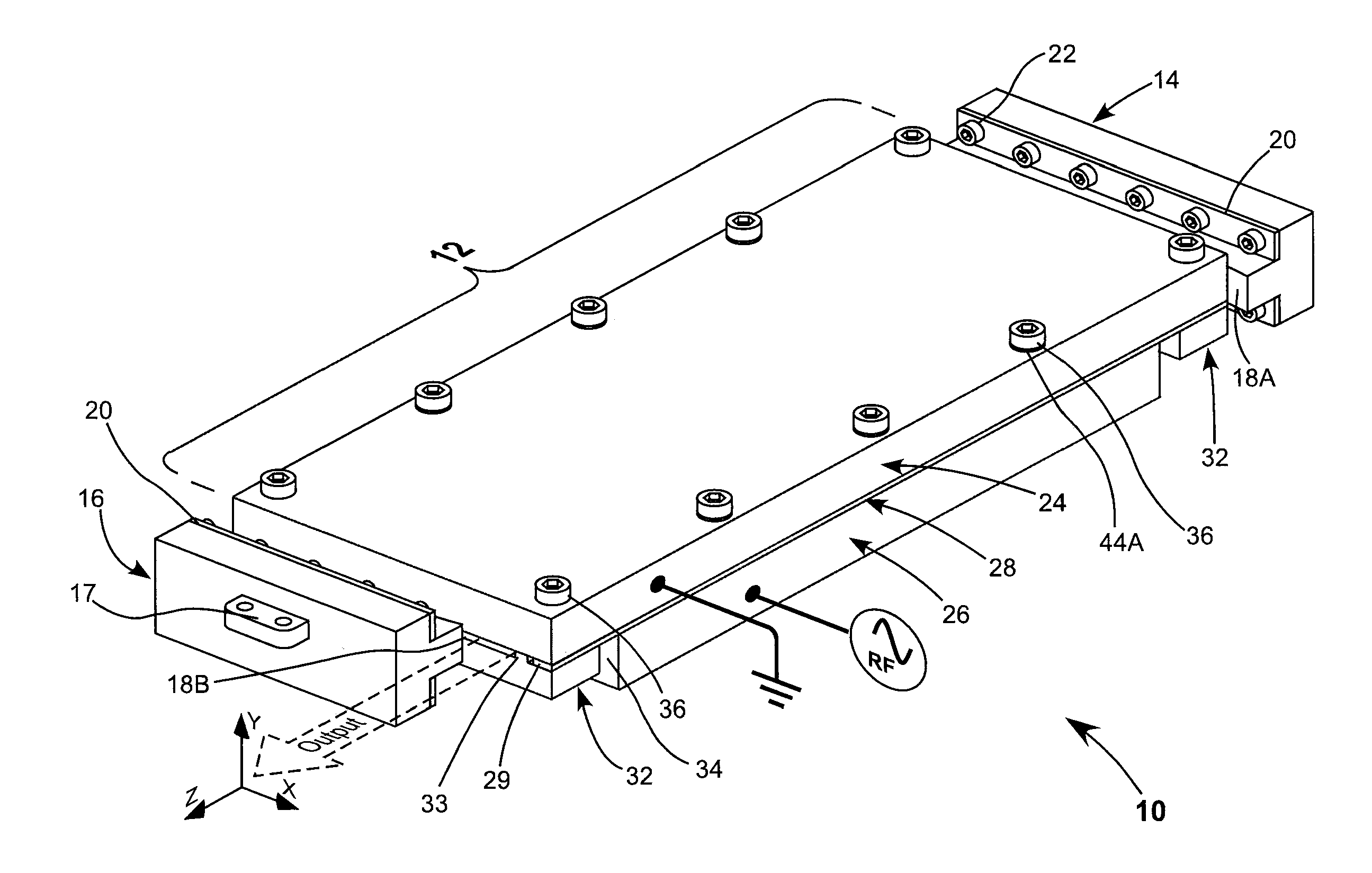Particle damage protection for high power co2 slab laser mirrors
- Summary
- Abstract
- Description
- Claims
- Application Information
AI Technical Summary
Benefits of technology
Problems solved by technology
Method used
Image
Examples
Embodiment Construction
[0015]Referring now to the drawings, wherein like components are designated by like reference numerals, FIG. 1 schematically illustrates a CO2 slab-laser 10 including a discharge-electrode assembly 12 in accordance with the present invention. Cartesian axes X, Y, and Z are depicted, with Z being the propagation-axis of the resonator, and X and Y being the free-space and waveguide-axes respectively. Laser 10 includes a negative-branch unstable resonator formed in one axis (the X-axis) by mirror assemblies 14 and 16 having concave reflecting surfaces 18A and 18B, respectively. Reflective surface 18A provides the turning mirror surface of the unstable resonator. Reflective surface 18B is shorter in the X-axis to allow output radiation to be coupled out of the resonator as indicated.
[0016]In this example, the mirror-assemblies include an elongated mirror body having a T-shaped cross-section with the reflective surfaces being formed on the base of the stem of the “T”. Attached to the und...
PUM
 Login to View More
Login to View More Abstract
Description
Claims
Application Information
 Login to View More
Login to View More - R&D
- Intellectual Property
- Life Sciences
- Materials
- Tech Scout
- Unparalleled Data Quality
- Higher Quality Content
- 60% Fewer Hallucinations
Browse by: Latest US Patents, China's latest patents, Technical Efficacy Thesaurus, Application Domain, Technology Topic, Popular Technical Reports.
© 2025 PatSnap. All rights reserved.Legal|Privacy policy|Modern Slavery Act Transparency Statement|Sitemap|About US| Contact US: help@patsnap.com



